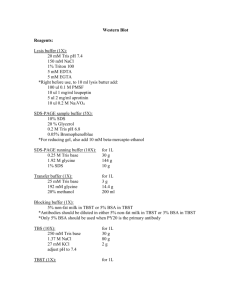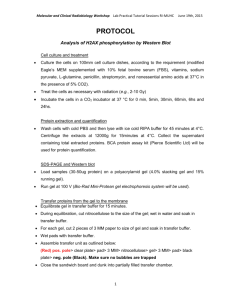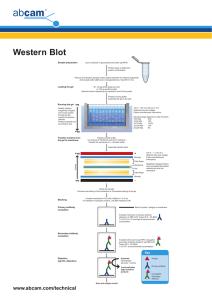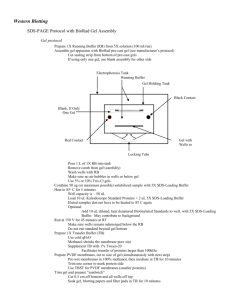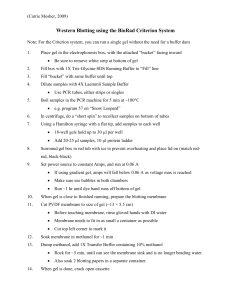Histone western blot protocol
advertisement
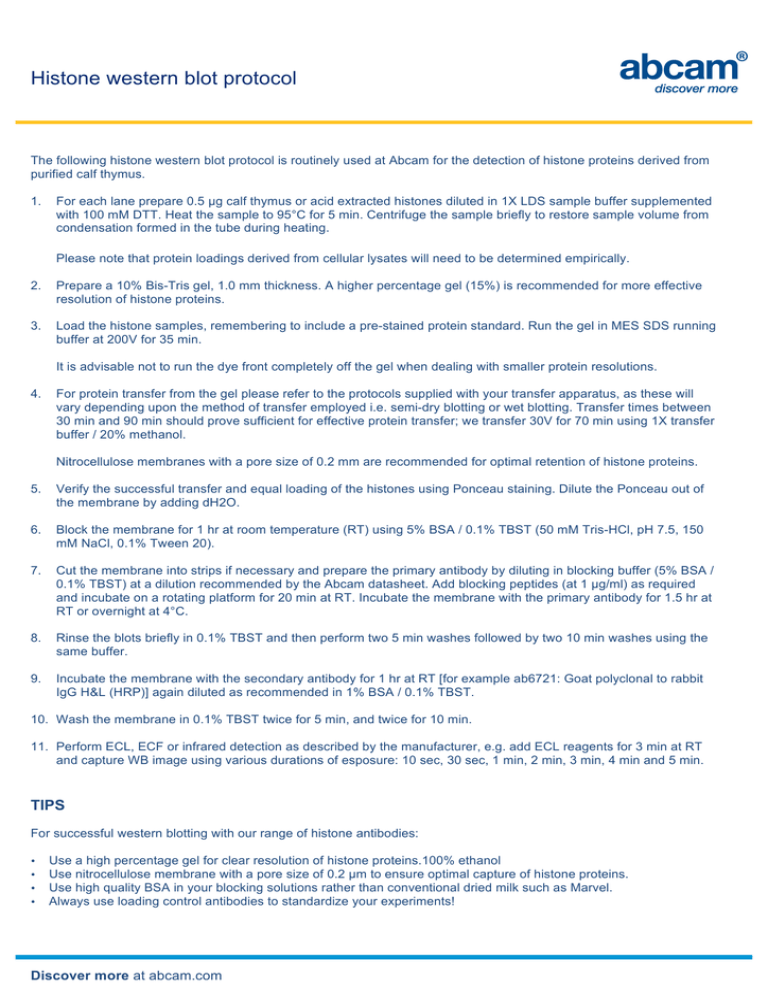
Histone western blot protocol The following histone western blot protocol is routinely used at Abcam for the detection of histone proteins derived from purified calf thymus. 1. For each lane prepare 0.5 µg calf thymus or acid extracted histones diluted in 1X LDS sample buffer supplemented with 100 mM DTT. Heat the sample to 95°C for 5 min. Centrifuge the sample briefly to restore sample volume from condensation formed in the tube during heating. Please note that protein loadings derived from cellular lysates will need to be determined empirically. 2. Prepare a 10% Bis-Tris gel, 1.0 mm thickness. A higher percentage gel (15%) is recommended for more effective resolution of histone proteins. 3. Load the histone samples, remembering to include a pre-stained protein standard. Run the gel in MES SDS running buffer at 200V for 35 min. It is advisable not to run the dye front completely off the gel when dealing with smaller protein resolutions. 4. For protein transfer from the gel please refer to the protocols supplied with your transfer apparatus, as these will vary depending upon the method of transfer employed i.e. semi-dry blotting or wet blotting. Transfer times between 30 min and 90 min should prove sufficient for effective protein transfer; we transfer 30V for 70 min using 1X transfer buffer / 20% methanol. Nitrocellulose membranes with a pore size of 0.2 mm are recommended for optimal retention of histone proteins. 5. Verify the successful transfer and equal loading of the histones using Ponceau staining. Dilute the Ponceau out of the membrane by adding dH2O. 6. Block the membrane for 1 hr at room temperature (RT) using 5% BSA / 0.1% TBST (50 mM Tris-HCl, pH 7.5, 150 mM NaCl, 0.1% Tween 20). 7. Cut the membrane into strips if necessary and prepare the primary antibody by diluting in blocking buffer (5% BSA / 0.1% TBST) at a dilution recommended by the Abcam datasheet. Add blocking peptides (at 1 µg/ml) as required and incubate on a rotating platform for 20 min at RT. Incubate the membrane with the primary antibody for 1.5 hr at RT or overnight at 4°C. 8. Rinse the blots briefly in 0.1% TBST and then perform two 5 min washes followed by two 10 min washes using the same buffer. 9. Incubate the membrane with the secondary antibody for 1 hr at RT [for example ab6721: Goat polyclonal to rabbit IgG H&L (HRP)] again diluted as recommended in 1% BSA / 0.1% TBST. 10. Wash the membrane in 0.1% TBST twice for 5 min, and twice for 10 min. 11. Perform ECL, ECF or infrared detection as described by the manufacturer, e.g. add ECL reagents for 3 min at RT and capture WB image using various durations of esposure: 10 sec, 30 sec, 1 min, 2 min, 3 min, 4 min and 5 min. TIPS For successful western blotting with our range of histone antibodies: • • • • Use a high percentage gel for clear resolution of histone proteins.100% ethanol Use nitrocellulose membrane with a pore size of 0.2 µm to ensure optimal capture of histone proteins. Use high quality BSA in your blocking solutions rather than conventional dried milk such as Marvel. Always use loading control antibodies to standardize your experiments! Discover more at abcam.com
